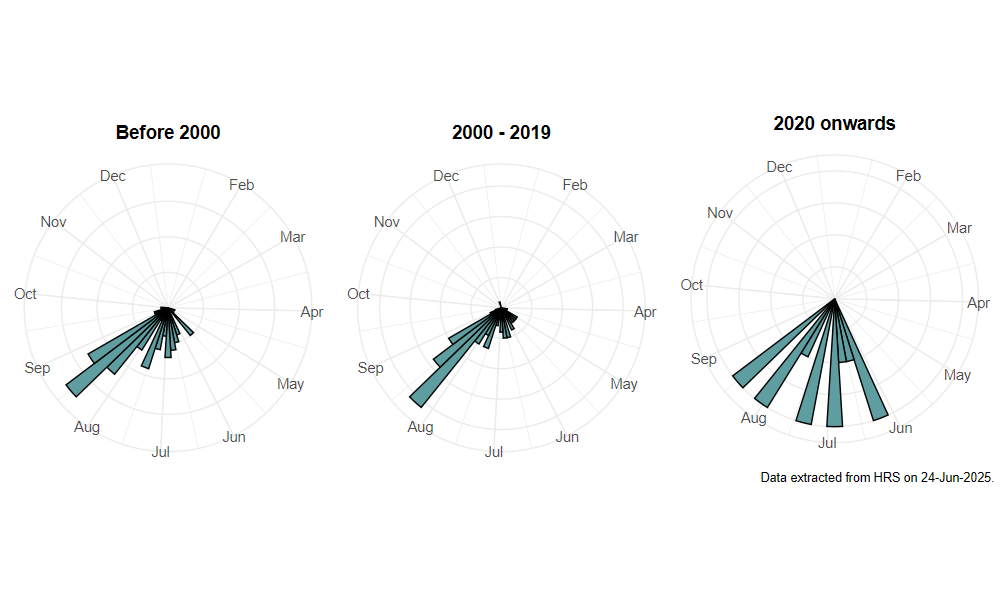Pipiza lugubris (Fabricius, 1775)
Identification
Identification difficulty = 4. ![]()
![]() according to Ball & Morris, 20241
according to Ball & Morris, 20241
Biology
This appears to be a woodland species that occurs along damp rides. There are suspicions that it may be associated with locations supporting Meadowsweet Filipendula ulmaria. The larvae of this genus are predaceous upon aphids but the precise prey of P. lugubris is unknown. Adults have been caught from beds of Meadowsweet and Wild Parsnip Pastinaca sativa on a grassy verge.
Flight period
The following plots show the number of unique records per week excluding those reported to be of immature stages.

Status
Lower Risk (Nationally scarce) - Ball & Morris, 20142. Notable - Falk, 19913.
Distribution
This species is widely distributed across England and Wales but is largely absent from extensive areas east of the Pennines and the East Midlands. The major concentrations of records are centred upon South Lancashire, Cheshire, Dorset, Hampshire, Surrey and Sussex.

Trends
The following plots show the Frescalo TFactor vs year and a map of the rescaled frequency (all records) for the species.
-
Ball, S., & Morris, R. (2024). Hoverflies of Britain and Ireland. WILDGuides (3rd ed.). Oxford: Princeton University Press. ↩
-
Ball, S., & Morris, R. (2014). A review of the scarce and threatened flies of Great Britain. Part 6: Syrphidae. ( No. 9). Species status (pp. 1–130). Peterborough: JNCC. ↩
-
Falk, S. (1991). A review of the scarce and threatened flies of Great Britain. ( No. 39). Research and Survey in Nature Conservation (pp. 1–194). Peterborough: NCC. ↩